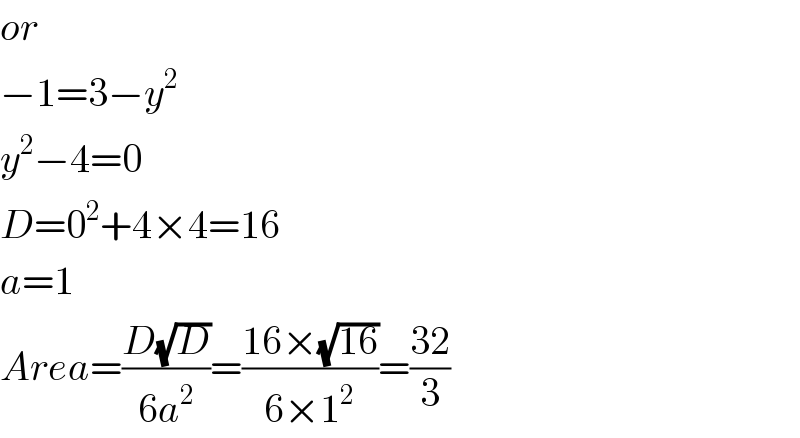
Question and Answers Forum
Question Number 98214 by me2love2math last updated on 12/Jun/20

Commented by mr W last updated on 12/Jun/20

Commented by mr W last updated on 12/Jun/20

Answered by Rio Michael last updated on 12/Jun/20
![to get the limits lets solve x = 3−y^2 and x = −1 ⇒ −1 = 3−y^2 ⇔ y = ± 2. the required area A = ∫_(−2) ^2 (right function)−(left function) ⇒ A = ∫_(−2) ^2 (3−y^2 −(−1)dy = ∫_(−2) ^2 (4 −y^2 )dy = [4y−(y^3 /3)]_(−2) ^2 = (8−(8/3))−(−8 + (8/3)) = 16 square units. Recall for this type of problems take the integral of the right function − the left function.](Q98219.png)
Answered by MJS last updated on 12/Jun/20
![x=3−y^2 ⇔ y=±(√(3−x)) 2∫_(−1) ^3 (√(3−x))dx=−(4/3)[(3−x)^(3/2) ]_(−1) ^3 =((32)/3)](Q98221.png)
